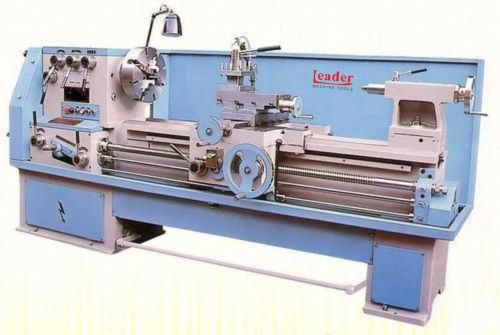The Science behind Precision Lathe Machine Design

Precision lathes are a critical piece of equipment in many manufacturing and metalworking industries. These powerful machines are capable of creating highly accurate and intricate parts and components with tight tolerances. But what exactly goes into the design of a precision lathe to achieve this level of performance? Let’s take a deep dive into the science behind precision lathe machine design.
Table of Contents
Key Factors in Precision Lathe Machine Design
1. Material Selection
The materials used in the construction of a precision lathe machine are crucial to its performance and longevity. The main frame, spindle, and other key components must be made from high-quality, dimensionally stable metals that can withstand heavy loads and stresses without deforming or wearing down over time. Common materials include cast iron, high-grade steel alloys, and specialized engineered materials.
2. Spindle Accuracy and Stability
At the heart of any precision lathe machine is the spindle – the rotating shaft that holds the workpiece. The spindle must be expertly engineered to maintain incredibly tight tolerances for concentricity, run-out, and vibration. This ensures that the workpiece rotates with perfect concentricity, enabling the cutting tool to create the desired shape with extreme precision. Spindle bearings, lubrication systems, and vibration dampening all play a critical role.
3. Slide ways and Guideways
The linear motion components of a precision lathe, such as the carriage, cross-slide, and compound rest, require equally precise engineering. The slide ways and guideways that these parts move along must be flat, straight, and free of play or vibration. Advanced materials, surface finishes, and lubrication systems are used to achieve silky-smooth linear motion with high repeatability.
4. Thermal Management
Heat buildup from the high-speed rotation of the spindle and the friction of the cutting process can cause thermal expansion and distortion in a precision lathe’s components. Effective cooling systems, thermal isolation, and materials with low coefficients of thermal expansion are essential to maintaining dimensional accuracy.
5. Control Systems
Modern precision lathes machine are equipped with advanced computerized numerical control (CNC) systems that precisely regulate the speed, position, and motion of the machine’s various components. These control systems, along with high-resolution feedback sensors, enable incredibly tight tolerances to be achieved consistently.
The Role of CNC Programming
CNC programming plays a crucial role in unleashing the full potential of a precision lathe machine. By carefully defining the tool paths, feeds, speeds, and other parameters in the CNC code, machinists can optimize the cutting process to produce parts with exceptional accuracy and surface finish. Advanced CNC programming techniques like tool compensation, adaptive feeds, and in-process measurement allow the machine to automatically compensate for variables like tool wear and thermal growth. This level of process control and automation is essential for achieving consistent, high-precision results, even on complex geometries.
The Importance of Maintenance and Calibration
Precision gear head lathe machine are precision instruments that require diligent maintenance and calibration to maintain their performance over time. Regular inspections, lubrication, and adjustments are necessary to ensure the machine’s components remain within their tight tolerances. Periodic calibration of the CNC control system, linear and rotary axes, and other key parameters is crucial for verifying and preserving accuracy. Neglecting maintenance can lead to gradual degradation of precision, so a robust preventative maintenance program is a must for any shop operating precision lathes.
The Future of Precision Lathe Design
As manufacturing technology continues to advance, we can expect to see ongoing improvements in the design and capabilities of precision lathes. Areas of innovation include:
- Increased use of lightweight, high-strength materials like ceramics and composites to reduce inertia and improve dynamic performance.
- Enhanced vibration damping and thermal management systems for even tighter tolerances.
- Smarter, more adaptive CNC control systems that can automatically optimize parameters in real-time.
- Integration of in-process measurement and feedback systems for closed-loop control and error correction.
- Increased automation and connectivity for lights-out, unattended precision machining.
By continuously pushing the boundaries of precision lathe design, manufacturers will be able to produce increasingly complex, higher-quality parts and components to meet the demands of modern industry.
What is the Future of Precision Lathe Machine Design?
The future of precision lathe machine design is expected to be shaped by advances in materials science, computer-aided design (CAD), and automation. As materials science continues to evolve, we can expect to see the development of new materials with improved strength, durability, and thermal conductivity. CAD software and simulation tools will continue to play a crucial role in precision lathe machine design, enabling designers to create more complex and accurate models of the machine and its components.
Conclusion:
Precision lathe machine design is a complex and multifaceted field that requires a deep understanding of mechanical engineering, materials science, and computer-aided design (CAD). By combining advanced materials and design techniques with cutting-edge CAD software and simulation tools, precision lathe machine designers can create machines that produce high-quality parts with tight tolerances. As the industry continues to evolve, we can expect to see the development of new materials and technologies that will further improve the accuracy and efficiency of precision lathe machines.



